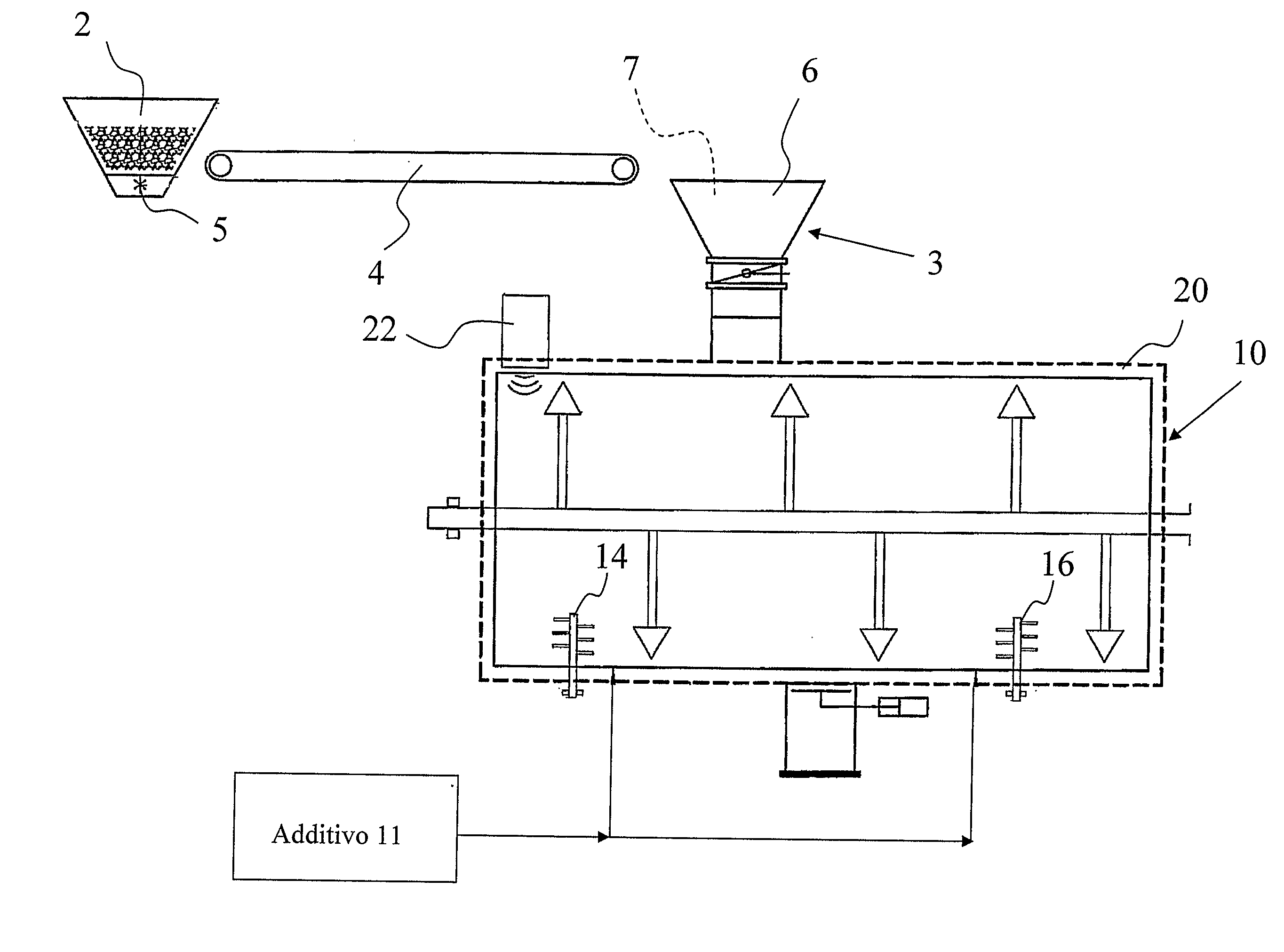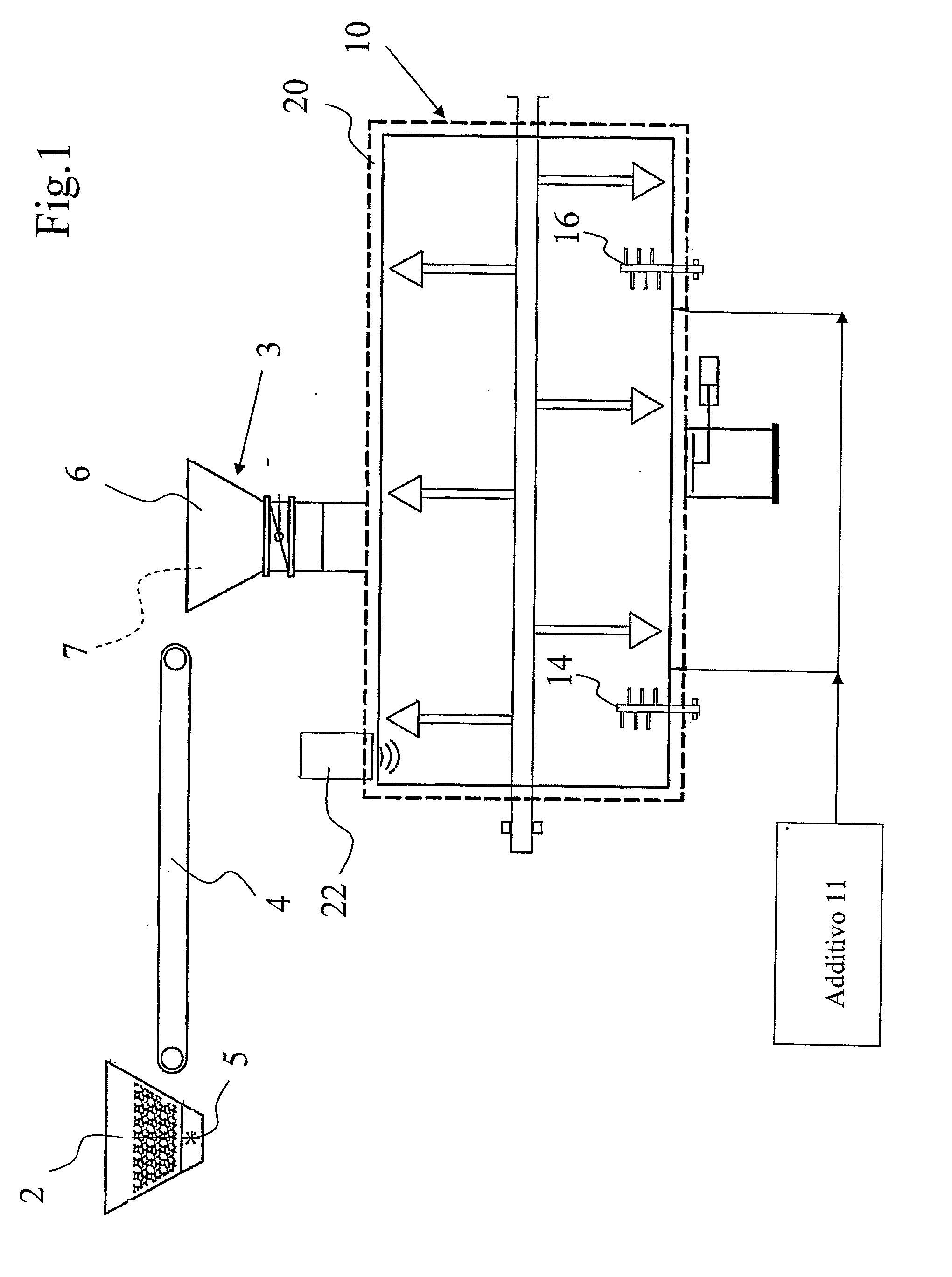Plant and process for transformation of organic material
a technology of organic material and plant, which is applied in the direction of organic fertilisers, chemical/physical/physical-chemical processes, applications, etc., can solve the problems of inconsistent characteristics of products resulting from decomposition, a serious form of environmental pollution, and a particular air quality. , to achieve the effect of low production, running and maintenance costs
- Summary
- Abstract
- Description
- Claims
- Application Information
AI Technical Summary
Benefits of technology
Problems solved by technology
Method used
Image
Examples
Embodiment Construction
[0025]A transformation process of organic material into fertiliser substrate occurs in a continuous manner in a transformation implant 1, shown in FIG. 2.
[0026]The organic material 2 is collected by means of an appropriate separate collection system and transported to the aforesaid transformation plant. The organic material 2 is directed towards a load hopper 3 by means of conveyor means 4 such as, in particular, a conveyor belt.
[0027]Alternatively, the previously ground organic material can be poured directly in the load hopper 3.
[0028]The first treatment step essentially consists of the size reduction by means of grinding of the organic material 2, which occurs in a suitable grinder 5 prearranged upstream of the conveyor means 4.
[0029]The organic material 2 which has variable dimensions at the inlet is brought to a size comprised within specific predefined tolerance intervals. Acceptable size ranges for this process step go from about 7 mm2 to 0.5 mm2, preferably from 5 mm2 to 1 m...
PUM
| Property | Measurement | Unit |
|---|---|---|
| temperature | aaaaa | aaaaa |
| mass | aaaaa | aaaaa |
| weight | aaaaa | aaaaa |
Abstract
Description
Claims
Application Information
 Login to View More
Login to View More - R&D
- Intellectual Property
- Life Sciences
- Materials
- Tech Scout
- Unparalleled Data Quality
- Higher Quality Content
- 60% Fewer Hallucinations
Browse by: Latest US Patents, China's latest patents, Technical Efficacy Thesaurus, Application Domain, Technology Topic, Popular Technical Reports.
© 2025 PatSnap. All rights reserved.Legal|Privacy policy|Modern Slavery Act Transparency Statement|Sitemap|About US| Contact US: help@patsnap.com


